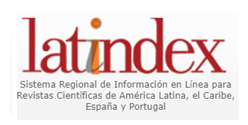SOCIAL REPRESENTATIONS OF THE ARMED CONFLICT IN COLOMBIA AND ITS IMPLICATIONS IN A PEDAGOGICAL PRACTICE FOR PEACE
DOI:
https://doi.org/10.56219/dialctica.v1i25.3887Keywords:
social representations, armed conflict, pedagogical practice and culture of peaceAbstract
Every day society faces changes and transformations that arise from everyday life; such as the situation of the armed conflict in Colombia and its implications in various scenarios; it is only necessary to take a look at the daily news in the different media to learn about a dynamic that has taken over some geographical spaces; where the struggle for power and authority in strategic geographical areas is accentuated every day; However, in this case an approach is made on education in Colombia, specifically at the secondary level; reason that leads to raise the following general objective: To generate theoretical reflections on the social representations focused on the armed conflict in Colombia and its implications in the pedagogical practice for peace in secondary education. The methodology used is based on a qualitative research, through the interpretative paradigm, under the technique of documentary analysis; it is convenient to point out that it was possible to obtain as a result an academic essay with the purpose of analyzing the sequels that originate from the armed conflict and the reflection that the social representations that each student has and the family environment affect the development and the improvement of the student's performance; This situation leads to a detailed approach of the social phenomenon to which the culture of peace adheres and of course requires attention in search of alternatives to deepen on the subject, in search of the quality of the teaching processes.
Downloads
References
Centro Nacional de Memoria Histórica. (2013). ¡basta ya! Colombia: Memorias de guerra y dignidad Informe General Grupo de Memoria Histórica. https://centrodememoriahistorica.gov.co/micrositios/informeGeneral/descargas.html
Centro Nacional de Memoria Histórica. (2018). ¿Qué están haciendo las Iniciativas de Memoria en 2018? https://centrodememoriahistorica.gov.co/que-estan-haciendo-las-iniciativas-de-memoria-en-2018/
Duque, K., Vergara, E., Rodríguez, A., & Puentes, M. (2023). Sembrando Verdad y Memoria, para Cosechar Paz. https://www.javerianacali.edu.co/sites/ default/files/2023-03/Sembrando%20Verdad%20y%20Memoria%20para%20 cosechar%20Paz%20Maleta%20de%20Herramientas…pdf
Galtung, J. (2003). Paz por medios pacíficos. Paz, conflicto, desarrollo y civilización. Gernika Gogoratuz.
CEPAZ. (2020). Lección de Paz: Sudáfrica. https://cepaz.org/leccion-de-paz-sudafrica/
Instituto Kroc. (2019). Percepción ciudadana sobre seguridad e instituciones. Tercer informe sobre la implementación del Acuerdo de Paz: La implementación sigue progresando. https://kroc.nd.edu/news-events/news/tercer-informe-sobre-la-implementacion-del-acuerdo-de-paz-la-implementacion-sigue-progresando/
Serrato, E. (2016). El concepto de calidad de fe y alegría y su sistema de mejora. Una mirada alternativa. http://otrasvoceseneducacion.org/archivos/171603
Unidad para las Víctimas. (2023). Las cifras que presenta el Informe Global sobre Desplazamiento 2022. https://www.unidadvictimas.gov.co/las-cifras-que-presenta-el-informe-global-sobre-desplazamiento/
Vergel, F. (2022). Historiografía de la cultura de paz en las escuelas colombianas. https://revistasuba.com/index.php/INVESTIGACIONYCREATIVIDAD/article/download/159/101/210
Vygotsky, L. S. (1979) El desarrollo de los procesos psicológicos superiores. Grijalbo.
Downloads
Published
How to Cite
Issue
Section
License
Copyright (c) 2025 DIALÉCTICA

This work is licensed under a Creative Commons Attribution-NonCommercial-ShareAlike 4.0 International License.
La revista Dialéctica conserva los derechos patrimoniales (copyright) de las obras publicadas, que favorece y permite la reutilización de los mismos bajo la licencia Creative Commons Atribución-NoComercial-CompartirIgual 4.0 , por lo cual se pueden copiar, usar, difundir, transmitir y exponer públicamente, siempre que se cite la autoría y fuente original de su publicación (revista, editorial, URL y DOI de la obra), no se usen para fines comerciales u onerosos y se mencione la existencia y especificaciones de esta licencia de uso. Si remezcla, transforma o crea a partir del material, debe distribuir su contribución bajo la misma licencia del original.












